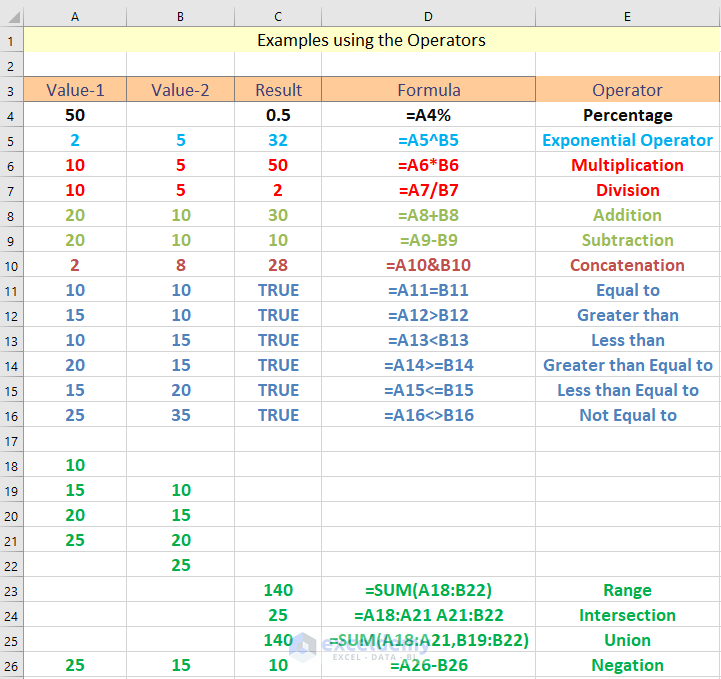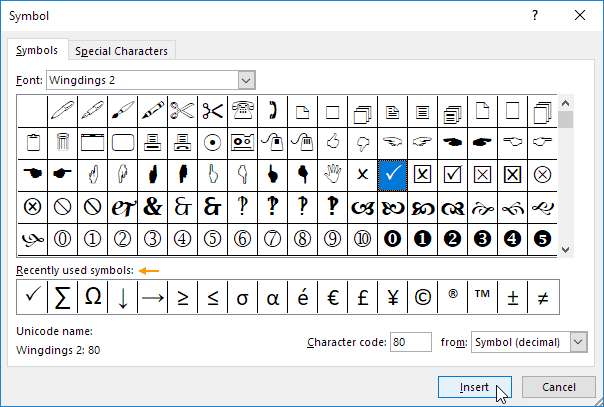

- #EXCEL SYMBOLS GUIDE SOFTWARE#
- #EXCEL SYMBOLS GUIDE CODE#
- #EXCEL SYMBOLS GUIDE PLUS#
- #EXCEL SYMBOLS GUIDE ZIP#
#EXCEL SYMBOLS GUIDE CODE#
Notice the character code at the bottom right side of the screen. Open a Word file, select Insert > Symbol, scroll down to the new font, choose one of the symbols, and click Insert. Note that it’s safer to extract to the Downloads folder, then copy and paste the font file to the Windows Font folder. Unzip or Extract the file back to the Downloads folder, or you can extract directly to the Windows Font folder. It’s a good idea to always save your downloaded files to the Downloads folder first, then copy/paste, move, or Unzip to the applicable folders.
#EXCEL SYMBOLS GUIDE ZIP#
Downloading these fonts is a breeze: Just browse through the collection, choose a symbol font, and click the Download button.Ī dialog box appears and asks where/what to do with this Zip file? Choose Save File and click OK.
#EXCEL SYMBOLS GUIDE PLUS#
If you do not have one of these programs, you can locate hundreds of “symbol” fonts on the Internet.įor example, 1001 Fonts advertises that it has 587 Dingbat fonts in its library, which include categories such as Holiday, Flowers, Animals, Retro, Religious, Romantic, plus dozens more.
#EXCEL SYMBOLS GUIDE SOFTWARE#
Some software programs such as the Adobe Creative Suite and the Corel Draw suite include a number of new fonts with the programs, which are generally pre-installed if you choose the “standard” installation. The most commonly shared keys are the 7, 8, 9, u, i, j, k, l, and m keys.

Some systems also provide an Fn (function key) button, which must also be depressed in order to use the Alt+ key codes. If that’s the case, the Number Lock keypad is generally on several of the inside keyboard keys, sharing with other characters. Some laptops and tablets don’t have numeric keypads.

Special characters on laptop or tablet keyboards IMPORTANT NOTE: Do not enter the plus signs, just the Alt key and the following number OR the characters followed by the simultaneous Alt and X keys. The ASCII decimal code for this same symbol is Alt+ 106, but that code and both the Unicode and ASCII Hex codes (006A plus Alt+ X displays the Latin lowercase letter “j.” This means some symbols (especially the downloaded ones) may only be available through the Insert > Symbol commands on the Ribbon menus. But notice that some of the new symbols also have letters in the codes such as the Hex ASCII code (aka Unicode) 006A, which is supposed to display a decorative heart from a downloaded symbol font called “KR All About the Heart.” Notice that all of the Alt codes in the charts above are represented by numbers for example, the White Queen is Alt+ 9813. Notice that many of the 9,000-level symbols are repeats of the original set (1 thru 255). Start with 1,000 and try some random numbers through 10,078. The Alt+ codes extend out five digits, so if you can’t find the symbol you’re looking for, play around with the numbers and see what you get. That’s why so many users get discouraged when looking for the British pound symbol £ (Alt+ 0163) and end up with the lowercase Latin letter acute accent ú (Alt+ 163)-which is also found at Alt+ 0250. In fact, Alt+ 1 through Alt+ 31 (without the preceding zeroes) are icon symbols (such as happy faces, card suits, astrology icons, etc.) and 176 through 223 are graphic lines and polygons. But the coolest of all are the graphics and icon symbols. In addition to the keyboard characters, you’ll find decimal codes for Greek and Latin letters, accent letters, pronunciation symbols over the alphabet, and mathematical symbols, such as the division and square root operators, the accent grave and circumflex symbols, plus worldwide currency symbols, and more. For example, Alt+ 0251 = û (the Latin small letter u with circumflex symbol above it) while Alt+ 251 = √ (the square root sign)-and so forth until you reach 256, which is the same as 0256 (both produce the pronunciation symbol for an uppercase ‘long’ A that is, Ā). You can test this yourself by entering both versions of these numbers. Somewhere around the decimal code 256, the preceding zero is no longer necessary.


 0 kommentar(er)
0 kommentar(er)
